The Martz Family Farm: How A Dream and GROW BIOINTENSIVE Collided
In January of 2005 our first daughter Andrea was born, and becoming parents changed our lives. Never liking the idea of daycare, we decided I would focus on raising her. All of a sudden, living in an apartment didn’t seem so appealing, but having a backyard did, and when my second daughter Sofía was born in May of 2006, we knew we wanted to make some changes. These didn’t come until 2008 when my husband accepted a job in San Diego, CA and we decided to move the family north of the border. This is the year our lives changed forever. A colleague of my husband recommended a book that opened our eyes to a reality we didn’t know existed, but I believe our souls felt, because it rang so true to us that scared us straight. Fear became the best catalyst for us, it made us take a hard look at our lives and realize that we didn’t know much about anything that truly mattered if hardships came our way, and we knew we wanted to thrive not just survive, if there was ever an event. We sat down, had a lengthy conversation about our new goals, and decided to divide tasks deemed the most important for us to know (food production and health for me and energy for him) and focused on them, learning as much as we could, always putting them to practice. The first documentary we ever saw on farming was Paul Gautschi’s Back to Eden. It was so inspiring that I befriended every single gardener in the area where we lived and had them dispose of their wood chips on the small acreage property we were renting. The soil was so hard that even a pick was no match for it, so we decided to cover it, creating a mulch to which we added spent mushroom compost and rock dust, and this became our first garden. We grew everything: beets, broccoli, onions, kale, chard, radishes, potatoes, cantaloupe, zucchini, watermelon, lettuces, peas, and the like. We planted fruit trees, berries, experimented growing in straw, straight wood chips, amended soil, non-amended, you name it, we tried it. We learned about vermicompost and compost tea and started raising worms. At one point we had over a million of them. This property became our school for a lot of the things we were learning and applying at the time. Gardening was the place where I found my spirituality and where I saw the connection we have with every single living being on this earth, and how important it was to protect and preserve it. We also started raising chickens and soon after, made friends with the owner of an organic food market and for eight months straight, I drove every day at seven in the morning to her store and collected all the fruits and vegetables deemed not sellable, all the fruit and vegetable scraps from the kitchen, the eggshells and egg cartons from the bakery, the pulp from the juice station, and all the spent coffee (two 55 gallon buckets daily), after which I would go home and sort out. As a side note, grocery stores waste so much food. I was amazed how much good food ended up in the bin. I had to learn quickly to preserve and store food, and the rest became worm food, chicken feed, and piles and piles of compost. When we discovered and certified in permaculture and regenerative agriculture, the fear we once had which took us on this life-altering journey made us feel empowered. We knew no matter the context, the place, the circumstance, we now had the tools we needed to succeed if we were thrown a curveball. My husband focused on energy production and dove deep into charcoal gasification, designing and building a prototype that produced 15 KW/h of electricity, and became very active in the permaculture circles due to his niche and expertise in sustainable energy, and participated in various symposiums, lectures and workshops. In the middle of all of this in December of 2009, we had our third daughter Natalia, and my older children were of school age. Schooling our girls became its own journey. We started with regular public school, later did traditional homeschool that transformed into them going to a charter school that focused on homeschooling with school activities a few days a week. But in 2013, when we made the decision to return to Mexico and move south of Puerto Vallarta, the concept of freedom laid heavy in our hearts, so when we pulled our girls out of school to move south, we made the decision to radically unschool them. This meant no school, no homework, no menial work, no schedules, no exams, no structured learning. Learning would become passion filled and self-guided, led by our own girls' likes and interests, harnessing their natural abilities to learn through play. Instead of us becoming “the teachers”, we were the facilitators of that knowledge, bringing the tools, people, or environment that allowed them to understand on their own, at their own pace, and always with enthusiasm, because they were experiencing and studying things they were excited about. The act of learning or acquiring knowledge was not a segregated ability, it was all-encompassing and not subject-oriented. It needs to be hands-on and lived, or is forgotten. Now my two oldest daughters are about to start college, the oldest going for a degree in Pedagogy, and attending trade school for clothes-making and sewing, and my second daughter is pursuing Culinary school. Through all of this, we filled our lives with work, learning, and raising our family. Having a background in architecture, I got certified in natural building and finishes. Having had experience processing foods and growing our garden, I was awarded a scholarship and did a master’s in Food Safety Management. I did a year of Naturopathic Homeopathic medicine, and took a certification course on Natural Medicine, and in 2021 I accepted Jesus as my Lord and Savior, and He became our guide and focus.
This property will be where we build our forever home, it will be the legacy we leave our daughters, it will be the place where we create a wellness retreat to heal others through food and natural medicine, and a learning and investigation center where workshops and classes will take place. Teaching the community and neighboring towns about this method.
This property not only will be our homestead and the place we will hold our future business endeavors, but after years of having had a strained relationship with my parents, this gift represents their acceptance to our chosen way of life that initially for them felt unfamiliar, reckless, and unacceptable. It is both an extended olive branch and a true blessing, allowing us to leave behind a legacy for our children. This property will be the Magnum Opus for my husband and The weather for this area ranges between 18-28°C (60 - 90°F), with a yearly rainfall of 800-2000 mm (34-79 in), starting in May until late October. The soil is both cambisol and regosol, and the flora is mixed, having grassland, forest, and tropical vegetation. Nestled on the skirts of the southern part of the Occidental Sierra Madre, this property sits only an hour away northwest from the Pacific Ocean and south of the Bahia de Banderas.
Why are we calling this our Magnum Opus you might ask? You see, since 2008, my husband and I have been on a path for self-reliance and self-sufficiency. Trying to learn as much as we can about permaculture, regenerative agriculture, water management and harvesting, alternative energy, animal husbandry and rearing, holistic management, soil food web, composting, and food production, with the necessary food preservation, cheese and bread making, natural medicine and herbology, and since I hold a bachelor’s in architecture, learning also about natural building methods, roofs, floors and finishes. Between my husband and I, we have acquired 30 years of knowledge in these past 15 years, but everything changed a year and a half ago. Last year around March, Sergio (a dear friend of ours and a GROW BIOINTENSIVE farmer) was organizing a Biointensive workshop with ECOPOL Director Juan Manuel Martínez, and invited my girls and I to participate; I fell in love with the method. Previously I had heard of spin farming, square foot gardening, market gardening, biodynamic farming, and the lot, but never Biointensive. This was a revelation for me, this was the piece that I knew was missing in all my learning throughout these years, especially regarding food production. It gives answers to so many questions. It is a full-circle/close-loop system that provides everything you need to build soil and the food you need to thrive. For me, this is literally the most empowering skill I am learning thus far. It is an intricate puzzle with many moving parts that need to be in harmony to work properly, but, even as I am learning it, and even though sometimes it feels so daunting and overwhelming, I feel in my soul that this is the answer to our prayers. Not only will we be able to apply it and benefit from it, but now we have a skill that we can teach others, empower them also, and build community while doing it. It’s been just a year and six months since I found out about this method, and a year and two months since we moved to our acre farm, where we are applying everything I’ve learned from Juan Manuel, Agustín and Marisol, (even my two youngest daughters are pursuing a certification in this method, because they understand the importance of growing your own food and soil building). Doing this, we have encountered some obstacles along the way, especially the state of our soil and lack of water, but I can definitely see the benefits of following these principles in the five garden beds we have so far, and I am so happy. Now I have been given the opportunity to participate in this 8-month internship, learning directly from John Jeavons, and being part of this group of amazing participants that are so knowledgeable and inspiring, to me this is a dream come true.
To say this has been an amazing opportunity is the understatement of the year, this eight-month internship has also been challenging, and at times daunting, and overwhelming. GBI teaches you through its eight principles of sustainable food production, that growing food doesn’t just entail sowing seeds, watering, and harvesting. For it to be sustainable, and as close to a loop as you can, you need to consider other factors, and these with much consideration and plenty of math and lots and lots of planning and design, your garden can provide you with the sufficient calories in crop production to sustain yourself, your family, and your soil. Record keeping, weighing, and taking notes are an intricate part of this method. The more you observe and write down, the more you learn from your garden, the more food you will produce and the better soil you will help build. I love, love, love this! Even my husband and daughters are excited. Back in June the purchase for the land in La Santa Cruz el Tuito was finalized, with its last payment, the beginning of a long-awaited dream made our hearts feel full and our imagination exploded with so many ideas, it’s been hard to reel them in. The first thing we need to do is:
This land will serve different purposes (this property has various goals and projects that we would like to be able to integrate):
All will be done through a private/common law trust, that will manage and administrate all the businesses that will be created to make them fully functional. Most of them being nonprofits, with the exception of the nursery and the wellness center. Those two businesses will be the ones that will bring the income to be able to accomplish the rest. We are creating a business plan to figure out a way to obtain funds to try and accelerate this process. The business plan for investing we are inclining for, is some kind of Time-Share Sale/Investment type, where people pay a "membership" for the chance to go to the retreat once a year for a full week, where they are treated to a wellness protocol of their choosing, for a certain amount of years, based on the value of their first investment. This will give Mision Naturata Wellness & Spa, the influx of cash, that will hopefully allow us to build the entirety of the property/projects.
So far this is it… We are planning our first trip as a family this year, my husband and my children will get to see the land for the first time, and God willing we’ll start the ball rolling. As to when we will be moving there permanently, we will wait for the right moment, in the meantime we will keep pushing forward, even if it is long distance. By now we have built enough community in that region to make things happen even in our absence. Life has not been easy by any means, we’ve hit hard times, being a one-income household adds a degree of pressure and stress in this day and age, but if we were motivated before, now, with this property, and the possibility of a future where we can build our dream here on earth is more than we could have ever hoped for. Will it be hard work? Absolutely. Will it be challenging? I know it will, in fact I’m counting on it. But long ago we stopped following the herd, now we like to swim against the current, and this dream is a long time coming. Together as a family we can conquer any obstacle and with community any dream can become a reality. We will let God steer this ship and bring us to shore. ♥ top | Newsletter Home |Table of Contents| Archive
|


 My husband and I met back in 2001, soon after 9/11. How we met was not as conventional as it is today, but fate intervened via Yahoo, and we were married in April of 2003. I have a bachelor’s in architecture and at the time I was working for my father and for an American firm. Troy was working on his own as a web designer, we were living in a small apartment in Tijuana, Mexico and life was great, we were happy being part of the “rat race”.
My husband and I met back in 2001, soon after 9/11. How we met was not as conventional as it is today, but fate intervened via Yahoo, and we were married in April of 2003. I have a bachelor’s in architecture and at the time I was working for my father and for an American firm. Troy was working on his own as a web designer, we were living in a small apartment in Tijuana, Mexico and life was great, we were happy being part of the “rat race”.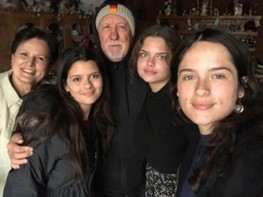 During the second year of the pandemic, we found out my father in law received a cancer diagnosis. So, after almost eight years of living in the tropics in a small Mexican town, where we were pursuing our sustainable and regenerative dreams and goals, building a beautiful supportive community, we made the decision to move back to Baja to be close to my husband’s family who live in San Diego, so we could support them in any way. By March of 2021 we were back in Baja, living in Tecate, renting a cabin on the ranch of a friend’s family and getting back to growing a garden and raising chickens and ducks.
During the second year of the pandemic, we found out my father in law received a cancer diagnosis. So, after almost eight years of living in the tropics in a small Mexican town, where we were pursuing our sustainable and regenerative dreams and goals, building a beautiful supportive community, we made the decision to move back to Baja to be close to my husband’s family who live in San Diego, so we could support them in any way. By March of 2021 we were back in Baja, living in Tecate, renting a cabin on the ranch of a friend’s family and getting back to growing a garden and raising chickens and ducks.
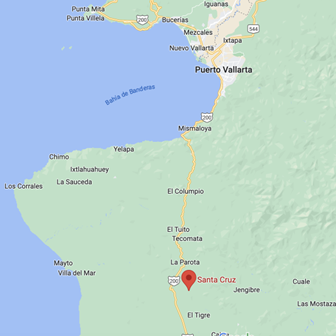 And because this seems to be the year for us, where God continues to bless us beyond our dreams, my parents gifted us a 19-acre farm, 14 minutes south from the small town where we lived near Puerto Vallarta. We have big plans for this place. It is a beautiful property in the tropical savanna, only an hour from the ocean in any direction except east. Where life just seems to want to grow. Where we have between 34” and 79” precipitation during the summer, a creek cuts through the land and large parota and ceiba trees are already established, pristine land that has never been farmed and that at one point in its history was a paddock for cattle.
And because this seems to be the year for us, where God continues to bless us beyond our dreams, my parents gifted us a 19-acre farm, 14 minutes south from the small town where we lived near Puerto Vallarta. We have big plans for this place. It is a beautiful property in the tropical savanna, only an hour from the ocean in any direction except east. Where life just seems to want to grow. Where we have between 34” and 79” precipitation during the summer, a creek cuts through the land and large parota and ceiba trees are already established, pristine land that has never been farmed and that at one point in its history was a paddock for cattle.
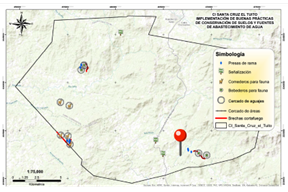
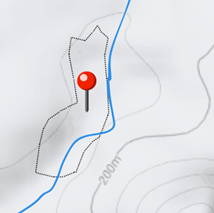 me. Located one and a half hours south of the town of Puerto Vallarta, the property rests inside the indigenous community of La Santa Cruz el Tuito, which is in the southern part of the Municipality of Cabo Corrientes, Jalisco. It has an area of 32,018 hectares; of which approximately 25,000 still have natural forest vegetation, of Low Deciduous Forest, Medium Sub Deciduous Forest, and Secondary Jungles, in addition to oak forests. The community has 977 members, including men and women, out of which, only 58 live within the confines of this territory, the larger number of the population live in El Tuito the municipal seat of Cabo Corrientes, with a population of around 4,000 inhabitants, or somewhere else, including the USA.
me. Located one and a half hours south of the town of Puerto Vallarta, the property rests inside the indigenous community of La Santa Cruz el Tuito, which is in the southern part of the Municipality of Cabo Corrientes, Jalisco. It has an area of 32,018 hectares; of which approximately 25,000 still have natural forest vegetation, of Low Deciduous Forest, Medium Sub Deciduous Forest, and Secondary Jungles, in addition to oak forests. The community has 977 members, including men and women, out of which, only 58 live within the confines of this territory, the larger number of the population live in El Tuito the municipal seat of Cabo Corrientes, with a population of around 4,000 inhabitants, or somewhere else, including the USA.
 The property purchased had been owned by the same family for almost two hundred years, used only as paddocks to graze their cattle. It sits in a landscape that hasn’t been agriculturally farmed, sprayed, or changed since then. Surrounded by similar properties, this land sits right in the path of a stream that comes down and through. With no upstream builds or agricultural land, the water seems to be in pristine condition, with fish and freshwater shrimp still swimming in it.
The property purchased had been owned by the same family for almost two hundred years, used only as paddocks to graze their cattle. It sits in a landscape that hasn’t been agriculturally farmed, sprayed, or changed since then. Surrounded by similar properties, this land sits right in the path of a stream that comes down and through. With no upstream builds or agricultural land, the water seems to be in pristine condition, with fish and freshwater shrimp still swimming in it.
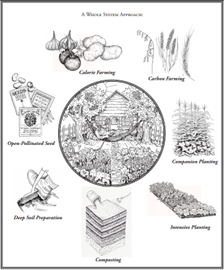 When we were first invited to a 3-day GROW BIOINTENSIVE Workshop in March 2021, hosted by Juan Manuel, I loved his sarcastic humor and the information he was teaching struck a chord deep inside. Finally, after years of studying and putting to practice what we were learning… the GB method was about a family-scale closed-loop food production system, and I was fully in. GBI teaches you to grow not only the food that will sustain you, but also the crops it needs to build soil through compost. October of 2022 came, and I took the 5-day Workshop to become a certified GB teacher. After moving to our acre farm back in February of this year my family and I helped co-host another 3-day GROW BIOINTENSIVE Workshop with Juan Manuel in March, and we started our spring garden in April.
When we were first invited to a 3-day GROW BIOINTENSIVE Workshop in March 2021, hosted by Juan Manuel, I loved his sarcastic humor and the information he was teaching struck a chord deep inside. Finally, after years of studying and putting to practice what we were learning… the GB method was about a family-scale closed-loop food production system, and I was fully in. GBI teaches you to grow not only the food that will sustain you, but also the crops it needs to build soil through compost. October of 2022 came, and I took the 5-day Workshop to become a certified GB teacher. After moving to our acre farm back in February of this year my family and I helped co-host another 3-day GROW BIOINTENSIVE Workshop with Juan Manuel in March, and we started our spring garden in April.
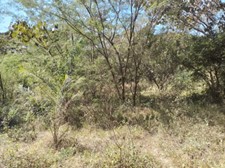 How are we going to go about it? How are we going to make this dream happen? That is a great question… we have a few ideas… obviously we are not wealthy, in the past we have made some decisions that worked to the detriment of our finances. Luckily, we are not the kind of people that scare easy, we have been able to raise our three children in a loving home, teaching them the importance of living freely, caring for the earth, caring for the people, and giving them the liberty to learn on their own, discovering what they are passionate about and supporting them in their endeavors. The best part of this journey has been finding our faith through Jesus Christ. Now this path seems less bumpy, less scary, because we know He will guide and provide us with what we need.
How are we going to go about it? How are we going to make this dream happen? That is a great question… we have a few ideas… obviously we are not wealthy, in the past we have made some decisions that worked to the detriment of our finances. Luckily, we are not the kind of people that scare easy, we have been able to raise our three children in a loving home, teaching them the importance of living freely, caring for the earth, caring for the people, and giving them the liberty to learn on their own, discovering what they are passionate about and supporting them in their endeavors. The best part of this journey has been finding our faith through Jesus Christ. Now this path seems less bumpy, less scary, because we know He will guide and provide us with what we need.
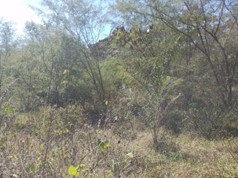
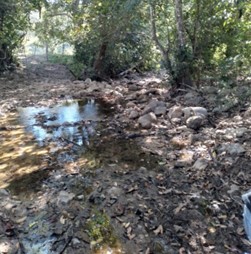 Within the master plan, we will be designing and prioritizing the areas that will be developed first, and since we know that the first 3-4 years we won't be living there, building our home does not feel like a priority; so, we will be focusing on creating and building the infrastructures that will make the rest of the projects possible.
Within the master plan, we will be designing and prioritizing the areas that will be developed first, and since we know that the first 3-4 years we won't be living there, building our home does not feel like a priority; so, we will be focusing on creating and building the infrastructures that will make the rest of the projects possible. 